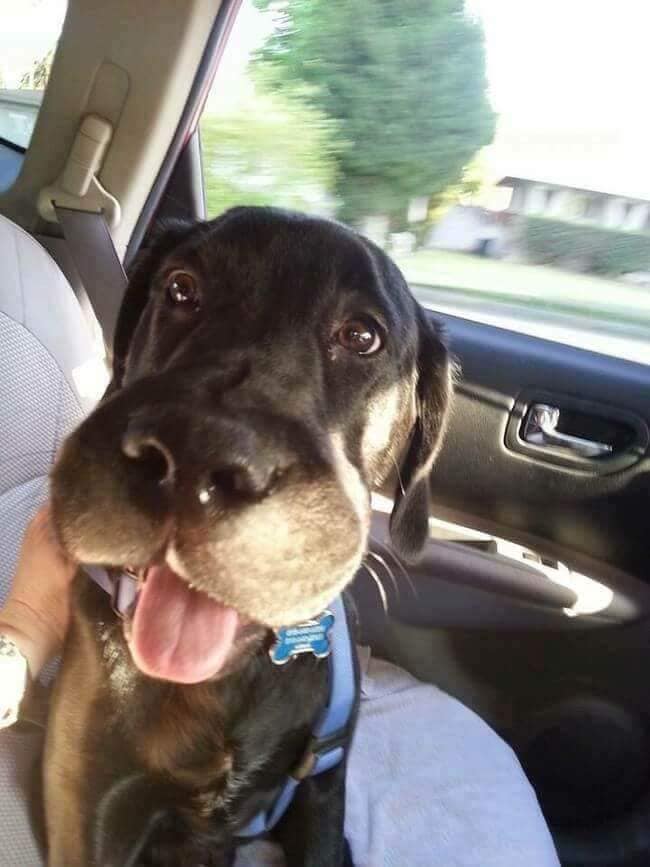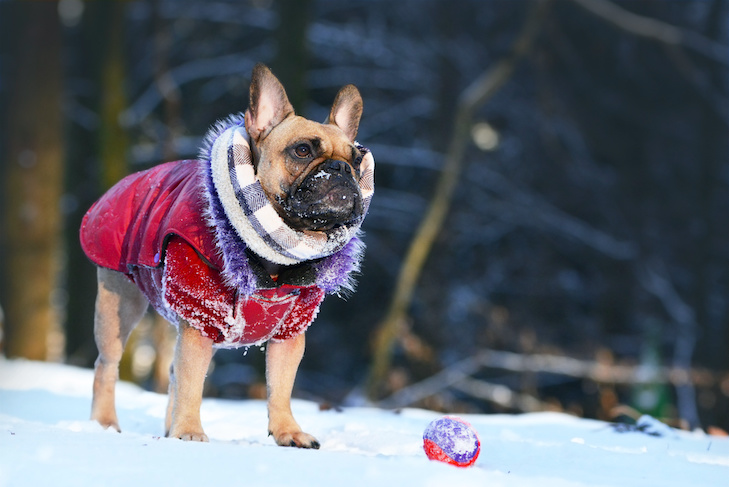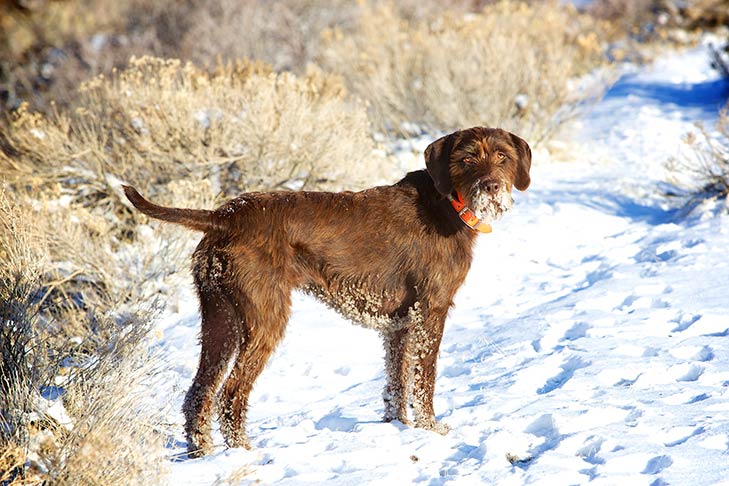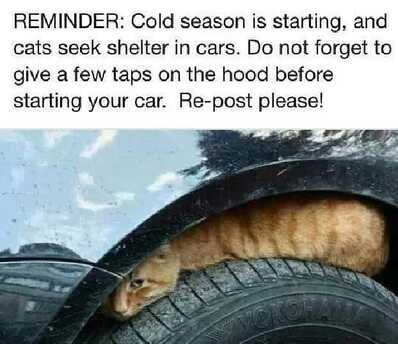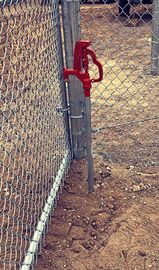SCARS
Sierra County Animal Rescue Society
We Take Sierra County Animals Seriously
❤️
Facebook
FOR SUMMER PET 2024-25 INFORMATION THAT YOU NEED TO KNOW - SCROLL DOWN THE PAGE
***NEWS***
MANY TOPICS ARE COVERED ON THE WEBSITE IN THE FAQ'S.
MANY OTHER TOPICS ARE ALSO COVERED ON THE NMFAD FACEBOOK PAGE.
MANY OTHER TOPICS ARE ALSO COVERED ON THE NMFAD FACEBOOK PAGE.
From the the SierraCountyCitizen.org website.
Pet Projects
By Durrae Johanek
Mar 23, 2024 12:00 pm
Whether abuse, neglect, adoption, or low-cost spaying and neutering, there are several dedicated
groups in Sierra County who focus on providing care and homes for companion animals.
sierracountycitizen.org/pet-projects/
Pet Projects
By Durrae Johanek
Mar 23, 2024 12:00 pm
Whether abuse, neglect, adoption, or low-cost spaying and neutering, there are several dedicated
groups in Sierra County who focus on providing care and homes for companion animals.
sierracountycitizen.org/pet-projects/
About the Sierra County Animal Rescue Society SCARS
Who we are:
A group of concerned citizens looking out for the welfare of Sierra County
companion animals (dogs & cats), owned and stray.
What we have done:
To date for 2023 we have sponsored the spay/neuter and rabies vaccination for
218 dogs and 359 cats. More than half of the cats were stray or shelter owned.
To date for 2022 we have sponsored the spay/neuter and rabies vaccination for
68 dogs and 479 cats. More than half of the cats were stray, or shelter owned.
In 2021 we sponsored the spay/neuter and rabies vaccinations for 92 dogs
and 336 cats. Again, the majority of the cats were stray, or shelter owned.
In 2020 we sponsored the spay/neuter and rabies vaccination of 39 dogs
and 147 cats.
In 2019 we sponsored the spay/neuter and rabies vaccination of 30 dogs and 66 cats.
Each year the burden increases. Each year we need more money to be able
to sponsor our county’s companion animals either with the spay/neuter surgeries
or financial assistance with urgently needed veterinary care.
Why do we emphasize spay/neuter?
Our shelter is small. The fewer unwanted puppies and kittens born, the less burden
on our shelter, the fewer kittens roaming the streets dying from starvation and disease,
the fewer puppies being dumped in the desert.
To get this work done, we apply for grants, present fundraisers and ask for YOUR donations.
Please mail a check made out to SCARS, P O Box 435, Williamsburg, NM 87942.
We are a 501-c-3 charitable organization, and your donation is fully deductible
from your federal income tax. We will mail a receipt upon request.
Who we are:
A group of concerned citizens looking out for the welfare of Sierra County
companion animals (dogs & cats), owned and stray.
What we have done:
To date for 2023 we have sponsored the spay/neuter and rabies vaccination for
218 dogs and 359 cats. More than half of the cats were stray or shelter owned.
To date for 2022 we have sponsored the spay/neuter and rabies vaccination for
68 dogs and 479 cats. More than half of the cats were stray, or shelter owned.
In 2021 we sponsored the spay/neuter and rabies vaccinations for 92 dogs
and 336 cats. Again, the majority of the cats were stray, or shelter owned.
In 2020 we sponsored the spay/neuter and rabies vaccination of 39 dogs
and 147 cats.
In 2019 we sponsored the spay/neuter and rabies vaccination of 30 dogs and 66 cats.
Each year the burden increases. Each year we need more money to be able
to sponsor our county’s companion animals either with the spay/neuter surgeries
or financial assistance with urgently needed veterinary care.
Why do we emphasize spay/neuter?
Our shelter is small. The fewer unwanted puppies and kittens born, the less burden
on our shelter, the fewer kittens roaming the streets dying from starvation and disease,
the fewer puppies being dumped in the desert.
To get this work done, we apply for grants, present fundraisers and ask for YOUR donations.
Please mail a check made out to SCARS, P O Box 435, Williamsburg, NM 87942.
We are a 501-c-3 charitable organization, and your donation is fully deductible
from your federal income tax. We will mail a receipt upon request.
Best Friends Reports History
|
Year Cats Dogs
2019 66 30 2020 147 39 2021 336 92 2022 479 68 2023 359 218 2024 TOTAL 1387 447 |
Arenas Valley Animal Clinic of Sierra County
www.arenasvalleyac.com
The Arenas Valley Animal Clinic
in Truth or Consequences
575-894-6773
www.arenasvalleyac.com
The Arenas Valley Animal Clinic
in Truth or Consequences
575-894-6773
CONTACT THE CLINIC TO CONFIRM THEIR SCHEDULE!
Arenas Valley Animal Clinic is doing spay/neuter surgeries on Monday and Friday.
The Doctor will also be doing spay/neuter surgeries on the 2nd and 4th Wednesday of the Month.
Please include no food after 6 the night before surgery. A little water is okay.
Drop off is at 7:30am. Pick up of your animal is at 1pm the same day.
Keep your pet quiet for 24 hours following and surgery and keep an eye on them.
Problems, call the veterinary office during business hours.
IMPORTANT: Call the Veterinary Office the day before you trap to make
sure that the doctor has not had an emergency call away.
Please check the Arenas Valley Animal Clinic Sierra County Facebook page
for the most current updates!
FACEBOOK
Arenas Valley Animal Clinic is doing spay/neuter surgeries on Monday and Friday.
The Doctor will also be doing spay/neuter surgeries on the 2nd and 4th Wednesday of the Month.
Please include no food after 6 the night before surgery. A little water is okay.
Drop off is at 7:30am. Pick up of your animal is at 1pm the same day.
Keep your pet quiet for 24 hours following and surgery and keep an eye on them.
Problems, call the veterinary office during business hours.
IMPORTANT: Call the Veterinary Office the day before you trap to make
sure that the doctor has not had an emergency call away.
Please check the Arenas Valley Animal Clinic Sierra County Facebook page
for the most current updates!
PLEASE NOTE!!!
If anyone is in danger of having to surrender your pet due to not being able to feed them,
please reach out to us. We can help.
We can help!. Message us. That is what we are here for....the companion animals of Sierra County.
www.sierracountyanimalrescuesociety.com
Email
Facebook
If anyone is in danger of having to surrender your pet due to not being able to feed them,
please reach out to us. We can help.
We can help!. Message us. That is what we are here for....the companion animals of Sierra County.
www.sierracountyanimalrescuesociety.com
🐕🐕🐕🐕🐕🐕
|
RESCUE RESOURCE LINKS
CLICK FOR THE PAGE RESOURCES NEW MEXICO RESCUE BORDER STATES RESCUE BREED SPECIFIC/MIX RESCUE RESCUE GROUPS AT-LARGE SERVICE, THERAPY, ESA TRANSPORT |
|
TRAP-NEUTER-RETURN
TNR is the only humane and effective way
to address community cat issues. This poster explains it simply. Let us help you TNR the cats in your neighborhood. ABOUT CATS
Chances are that cat once had an indoor home or has been socialized outside and can easily be acclimated to living inside. The greatest gift you can give a friendly stray cat is a chance at a loving, secure home where he can be safe from the elements, safe from predators who want to hurt him (including man), safe from contracting illnesses and parasites from other animals, and the guarantee that he will receive all the nourishment that he needs so that he never has to hunt or beg for food again. Whether it's your home or someone else's, the greatest gift you can give a homeless, friendly cat is to help it find an indooR forever home. You may say you love him and don't want to part with him, but that's not love It's selfishness. He deserves better. Please don't leave him/her out there. PLEASE DON'T ABANDON PETS If you see animal abuse.
If you see a dog chained up OUT IN THE heat WITH NO, shelter, or water, (basically the dog will die) please call Truth or Consequences Animal Control Dispatch at 575-894-7111 |
***WARNING***
Dog fighting rings do exist 💔
Never give away animals for free. And pets in your own back yard are not safe anymore either. Best to keep them inside or be outside with them. Be aware of people trolling your neighborhood! 😢This is a bait dog😢
He is safe now, but Look close, look at the defeat in this baby’s eyes, look at the scars and imagine what this dog went through. Now, realize when a dog is given away FREE and no one checks out the people who pick up a free dog, no one ask for a reference, no one checks the home....that dog can end up just like this!!! Dog fighters are wolves in sheep’s clothing. They appear normal, they send their wife or girlfriend because females seem safer. Be careful when rehoming a dog!!! Take time to check the people out. Go to their house. And charge a rehoming fee!!! It’s a red flag if they have an issue with paying a simple $25-$50 fee. Facebook has now banned charging on a post BUT contact a local rescue to help you. They can charge a fee and post it on Facebook. Or do it as a donation to a rescue but make the people show an investment in the dog.
Be Aware this happens in Every Country and State. Animal Abuse can happen to any Animal. |
DON'T FORGET TO CHECK THE SCARS FACEBOOK PAGE AND THE INDEX FOR UP TO DATE INFORMATION!
SCARS SUMMER 2024 INFORMATION
DON'T FORGET TO CHECK THE SCARS FACEBOOK PAGE AND THE INDEX FOR MORE INFORMATION
DON'T FORGET TO CHECK THE SCARS FACEBOOK PAGE AND THE INDEX FOR MORE INFORMATION
❤️ TIPS FOR KEEPING YOUR ANIMALS SAFE THIS SUMMER ❤️
Summer is the time to have outdoor fun with our dogs. Longer walks in the park, ambitious hikes, beach days, or family travel—the sun is shining, and the outdoors is calling.
But hot weather can also make us uncomfortable, and it poses special risks for dogs and for cats. From increased exposure to ticks and other insects to sunburn and even heatstroke, all sorts of things can go wrong for your dog in summer. Keep the following safety concerns in mind as the temperature rises, and follow our tips for summer safety for dogs and cats.
www.akc.org/expert-advice/health/summer-safety-tips-for-dogs/
But hot weather can also make us uncomfortable, and it poses special risks for dogs and for cats. From increased exposure to ticks and other insects to sunburn and even heatstroke, all sorts of things can go wrong for your dog in summer. Keep the following safety concerns in mind as the temperature rises, and follow our tips for summer safety for dogs and cats.
www.akc.org/expert-advice/health/summer-safety-tips-for-dogs/
- Give your dog a shady spot to hang out on hot days or keep them inside where there’s air-conditioning. Doghouses are not good shelter in the summer because they can trap heat.
- Fill a child-size wading pool or pool designed for dogs with fresh water for your dog to cool off in.
- Never leave your dog in a closed vehicle on a hot day. The temperature inside a car can reach 100 degrees Fahrenheit in just 20 minutes.
- Provide plenty of cool, fresh water, perhaps in an insulated dog bowl.
- Avoid exercising your dog strenuously on extremely hot days. Take walks in the early mornings or evenings, when the sun’s heat is less intense.
- Avoid exposing your dog to hot asphalt or sand, which can burn their paws, for any prolonged period.
- Be mindful of your dog’s breed. Dogs that are brachycephalic (have a short head and snout), such as Bulldogs, Boxers, Japanese Chin, and Pekingese, have an especially hard time in the heat because they do not pant as efficiently as longer-nosed dogs. Keep your brachycephalic dog inside with air-conditioning.
- Make sure your dog’s vaccinations are up-to-date, especially since dogs tend to stay outdoors longer and come into contact with other animals more during the summer months.
- Keep dogs off of lawns that have been chemically treated or fertilized for 24 hours (or according to package instructions), and away from toxic plants and flowers.
- Keep your dog’s coat well-brushed, clean, and free of mats.
- Ask your veterinarian about which preventative medication against fleas, ticks, and mosquitoes that carry heartworm will be best for your dog. The AKC Pet Healthcare Plan can help with the cost of providing quality healthcare, including preventive medicine, throughout your dog’s life.
AT THE BEACH
- Protect them against sunburn. Dogs, especially those with short hair, white fur, and pink skin, can get sunburned. Limit your dog’s sun exposure during the day and apply sunscreen to their ears, nose, and coat before going outside.
- Check with a lifeguard for water conditions. Dogs are easy targets for sea lice and jellyfish.
- Keep a check on their activity. Running on the sand is strenuous exercise. A dog that is out of shape can pull a tendon or ligament, and running on wet sand can make their paw pads blister.
- Don’t let your dog drink seawater, since salt will make them sick.
- Rinse them off at the end of the day. Salt and other minerals in ocean water can damage your dog’s coat.
- Check local ordinances before heading out. Not all beaches allow dogs, and some restrict the time they can be there.
- Let your dog go for a swim. Some dogs are natural swimmers, while others won’t get a toe wet. Never force your dog into the water. Follow these water safety tips and be mindful of your dog’s preferences and skills before sending them out to ride the waves.
- Don’t let your dog overdo it. Swimming is hard work, and they may tire quickly. When swimming in the ocean, be careful of strong tides.
- Never leave your dog unattended in water.
- Put your dog in a life jacket.
BEES .... Don't Eat Them!!!
In our desert climate bees are active all year.
In our desert climate bees are active all year.
How to Treat a Bee Sting
If you notice your pooch (or kitty) has met the wrong end of the bee, keep a careful watch for an allergic reaction. Just like humans, some dogs are severely allergic to the venom. Symptoms to look for: difficulty and/or rapid breathing, weakness, vomiting, pale gums, diarrhea, and a large amount of swelling that extends away from the sting site. Contact an emergency vet immediately should you see any signs of an allergic reaction. If your dog is not allergic to bees, but is stung multiple times, you should also consult your vet immediately, as reactions can be more dangerous than a single sting.
Try to remove the stinger if possible; it will make your best friend more comfortable and decrease the likelihood of infection. You can treat the area with a mixture of water and baking soda, and by wrapping an ice pack with a towel and applying to the site to reduce swelling. Benadryl is a safe and effective antihistamine for bee stings. Proper dosing for dogs is 1 mg per pound. Most Benadryl comes in 25 mg tablets, which is easier to dose for larger dogs but for small dogs, try children’s Benadryl in a 12.5 mg dose (the liquid option makes it easy!).
What happens if your dog swallows a bee? Trapped in your dog’s mouth, a bee will sting anywhere. If your dog has tried to swallow it, the stinger may be at the very back of the tongue or even down the esophagus. This can be a very dangerous situation as swelling could occur and block their airway.
Long story short, keep your vet’s number handy along with Benadryl, and keep a close eye on free range pups during these warmer summer months! Bee safe out there!
www.dog-on-it-parks.com/blog/bee-safe-how-to-prevent-and-treat-bee-stings
If you notice your pooch (or kitty) has met the wrong end of the bee, keep a careful watch for an allergic reaction. Just like humans, some dogs are severely allergic to the venom. Symptoms to look for: difficulty and/or rapid breathing, weakness, vomiting, pale gums, diarrhea, and a large amount of swelling that extends away from the sting site. Contact an emergency vet immediately should you see any signs of an allergic reaction. If your dog is not allergic to bees, but is stung multiple times, you should also consult your vet immediately, as reactions can be more dangerous than a single sting.
Try to remove the stinger if possible; it will make your best friend more comfortable and decrease the likelihood of infection. You can treat the area with a mixture of water and baking soda, and by wrapping an ice pack with a towel and applying to the site to reduce swelling. Benadryl is a safe and effective antihistamine for bee stings. Proper dosing for dogs is 1 mg per pound. Most Benadryl comes in 25 mg tablets, which is easier to dose for larger dogs but for small dogs, try children’s Benadryl in a 12.5 mg dose (the liquid option makes it easy!).
What happens if your dog swallows a bee? Trapped in your dog’s mouth, a bee will sting anywhere. If your dog has tried to swallow it, the stinger may be at the very back of the tongue or even down the esophagus. This can be a very dangerous situation as swelling could occur and block their airway.
Long story short, keep your vet’s number handy along with Benadryl, and keep a close eye on free range pups during these warmer summer months! Bee safe out there!
www.dog-on-it-parks.com/blog/bee-safe-how-to-prevent-and-treat-bee-stings
BEWARE OF FOXTAILS (GRASS) - SERIOUSLY!
THERE IS ALOT OF THIS GRASS GROWING WILD IN THE AREA.
KINDLY POINT THIS HAZZARD OUT TO THE RESIDENT.
THERE IS ALOT OF THIS GRASS GROWING WILD IN THE AREA.
KINDLY POINT THIS HAZZARD OUT TO THE RESIDENT.
|
Foxtail awns present the most insidious threat to the health of dogs in the Western United States. Here is how to identify foxtails, get them off your property, and protect your dog. Foxtails Are Designed to Penetrate Anything!
The seeds of this nasty grass seem to have a special affinity for invading dogs’ bodies. The three most common hazards are these: They get sniffed into dog noses, work their way into dog ears, and lodge between dog toes. Each of these sites is a mere port of entry for these sturdy seeds; once inside, they start a relentless crawl forward, traveling deeper into a dog’s tissue with every passing hour. They are sometimes found in exploratory surgeries years afterward; the durable seed and awn fibers resist breaking down in the body as if they were made of plastic. Those common jumping-off points for the foxtail’s inner-dog journey are not the only ones, however. Foxtails can penetrate any part of your dog; all they need is a place to attach. In dogs with very short hair (like American Pit Bull Terriers, Vizslas, and Weimaraners), they need a fold in the skin of some kind (armpit, vagina, prepuce). To these bristly seeds, longer, thicker, or curly coats behave a little like the “loop” side of a Velcro-type hook-and-loop fastener; a foxtail can stick to the coat, and wherever it sticks, it will start to burrow, enabling the seeds to penetrate anywhere on the furry dogs’ bodies. If your dog has been anywhere near foxtails, and has any sort of abnormal sign of discomfort or irritation – shaking her head, an uncharacteristic squint, repetitively licking her paw or other part of her body, sneezing, coughing, gagging – call your vet and make an appointment as soon as possible. |
HEATSTROKE KILLS
Even when you think the temperature is OK or feels fine to you, your fur kid may feel very differently
Even when you think the temperature is OK or feels fine to you, your fur kid may feel very differently
|
HOT SURFACES BURN PAWS!!!
How do I protect my pet’s paws from the heat?
Dog booties and socks help shield against the hot pavement. Try to avoid walking on streets or sidewalks in the middle of the day, when it’s hottest. If your pooch seems uncomfortable on a manmade surface, head for grass, which stays cooler than pavement. Do take your dog for walks on pavement when the weather is cooler. This will help your dog’s paws form calluses, which will make the skin thicker and less prone to burns and other injuries. IF YOU PUT YOUR PALM ON THE HOT SIDEWALK OR ASPHALT AND IT IS BURNING HOT... THINK ABOUT HOW YOUR DOG'S PAWS ARE RESPONDING! |
Dogs in hot cars can suffer from potentially fatal heat stroke in as little as 15 minutes. Dogs die in hot cars as they can overheat very quickly and struggle to cool themselves down, even when a window has been left open or water has been left in the car.
Hot sidewalks, asphalt and other surfaces can burn a dog’s paws.
Dogs showing these symptoms may have burned paws: Limping or avoiding walking Licking or chewing feet Paw pads are darker in color than usual Pads are visibly damaged Blisters or redness First aid for burned paws If you suspect your dog has burned paw pads: Bring your dog inside right away. Carry your pet if necessary. Flush the foot with cold water or use a cold compress. Try not to let your dog lick the injured pad. Take your dog to the vet as soon as you possible because burns can become infected. Your dog might need antibiotics or pain medication depending on the severity of the burn. The vet can also rule out other possible causes of the symptoms. Paw licking can also be a sign of other problems, such as allergies. |
IS IT OK TO SHAVE YOUR DOG'S COAT IN SUMMER?
FROM THE AMERICAN KENNEL CLUB
FROM THE AMERICAN KENNEL CLUB
Temperatures are soaring, your dog is panting, and there’s dog hair all over the house. You might be thinking that a good, close shave could help cool your dog off while eliminating some of that furry mess.
Well, think again. Many dogs should not be shaved at all, depending on their coat type. Shaving can actually have the opposite effect of what you intend and make your dog even hotter. Here are some insights on shaving your dog, and some steps you can take instead to keep your dog healthy in hot weather.
www.akc.org/expert-advice/health/is-it-ok-to-shave-your-dog
Well, think again. Many dogs should not be shaved at all, depending on their coat type. Shaving can actually have the opposite effect of what you intend and make your dog even hotter. Here are some insights on shaving your dog, and some steps you can take instead to keep your dog healthy in hot weather.
www.akc.org/expert-advice/health/is-it-ok-to-shave-your-dog
|
Double-Coated Dogs
Double-coated dogs have a soft, inner coat of hair close to their skin that serves as an insulating layer, helping keep them warm in cold weather and cool in hot weather. In summer, a dog will shed a good bit of this under- layer, but what remains will help capture air between the two coat layers, allowing the dog to keep the heat at bay and regulate their body temperature. The outer coat (or guard hair) consists of longer hair that gives a dog their color. Dogs do not shed the outer coat as much. Examples of double-coated dogs are Golden Retrievers, Border Collies, German Shepherd Dogs, Labrador Retrievers, Siberian Huskies, and English Springer Spaniels. As they shed their undercoats in warm weather, the outer coat remains to protect them from sunburn and insect bites. Golden Retriever puppies drinking water from a bowl in the grass. Shelley L. Dennis via Getty Images “Your dog’s coat actually acts as an insulator,” explains Dr. Jerry Klein, Chief Veterinary Officer for the AKC. “Shaving that coat to reduce shedding or supposedly to keep the dog cool also eliminates that insulating layer of fur, makes the dog susceptible to heat stroke, and can result in improper hair growth and the possibility of follicle damage. A dog’s fur coat protects him from sunburn and decreases his risk of developing skin cancer.” Shaving a double coat can also do long-term damage. When it’s shaved down to the skin, the undercoat hair will grow back faster, and sometimes will crowd out the slower-growing guard hairs. This can change the texture and color of a dog’s coat and make it appear patchy and unattractive. |
Single-Coated Dogs
Single-coated dogs include dogs such as Greyhounds, Boxers, Dalmatians, Poodles, Maltese, and Afghan Hounds. They can have very short hair or long hair, and it can be wiry, smooth, or curly – but all breeds have even-looking hairs with no soft undercoat. Certain types of single-coated dogs may benefit from having a professional groomer clip their coats occasionally to prevent matting and to keep them cooler. However, the coats should not be shaved down to the skin. It’s best to leave at least one inch of hair to protect them from sunburn, skin cancer, and bug bites. These dogs don’t have the added insulation of an undercoat. They need to keep at least one inch of hair for warmth and protection. How to Safely Cool Down Your Dog Dogs cool down a lot differently than we do, and shaving really has no big impact on cooling them down. Dogs rely on panting to control most of their temperature regulation. They also rely on vasodilation (blood vessel expansion) to help them cool off, especially on their ears and face. When the blood vessels expand, they bring the hot blood closer to the surface of the skin. Dogs also have merocrine sweat glands that function similarly to human sweat glands. However, these are they are located only in a dog’s paw pads, and they activate when the dog is hot to cool them down. Rather than shaving your dog, use these hot-weather grooming tips to keep your pet comfortable. Brush your dog’s fur regularly. This eliminates dead hair, prevents matting, and allows for better air circulation in their coat. Give your dog regular cool baths to keep them clean and free of pests. Since your dog’s cooling sweat glands are located on their feet, keeping their paws trimmed of excess fur can help the sweat evaporate and cool them off. Groomers suggest it’s also a good idea to keep a dog’s legs and stomach trimmed of very long hair to enhance cooling. Make sure your dog always has access to cool water and shade, takes walks and exercises only during the coolest parts of the day, and is never left unattended in a vehicle, even for just a few minutes. |
Ticks don’t jump or fly—they can only crawl. They get onto their host by waiting at the tips of vegetation. When a dog or person brushes against a bush, for example, the tick quickly grabs on and then crawls to find a place to bite.
Dogs are not a direct source of infection for people. Lyme disease can’t be transmitted from one pet to another, nor from pets to humans, except through tick bites. However, a carrier tick could come into your house on your dog’s fur and get on you.
Lyme disease, also known as Lyme borreliosis, is a bacterial illness that can be transmitted to humans, dogs, and other animals by certain species of ticks. It is caused by the spiral-shaped bacterium Borrelia burgdorferi, which is carried inside a tick and gets into a dog or person’s bloodstream through a tick bite. Once in the bloodstream, the bacteria can travel to different parts of the body and cause problems in specific organs or locations, such as joints, as well as overall illness. Given the seriousness of Lyme disease, it’s important to be aware of tick prevention and treatment for dogs.
Diagnosis is made by a combination of history, physical signs, and diagnostics. For dogs, the two blood tests for diagnosing Lyme disease are called the C6 Test and Quant C6 test. Veterinarians perform both.
Other less common—but serious—bacterial tick-borne diseases in dogs include anaplasmosis and babesiosis.
Dogs are not a direct source of infection for people. Lyme disease can’t be transmitted from one pet to another, nor from pets to humans, except through tick bites. However, a carrier tick could come into your house on your dog’s fur and get on you.
Lyme disease, also known as Lyme borreliosis, is a bacterial illness that can be transmitted to humans, dogs, and other animals by certain species of ticks. It is caused by the spiral-shaped bacterium Borrelia burgdorferi, which is carried inside a tick and gets into a dog or person’s bloodstream through a tick bite. Once in the bloodstream, the bacteria can travel to different parts of the body and cause problems in specific organs or locations, such as joints, as well as overall illness. Given the seriousness of Lyme disease, it’s important to be aware of tick prevention and treatment for dogs.
Diagnosis is made by a combination of history, physical signs, and diagnostics. For dogs, the two blood tests for diagnosing Lyme disease are called the C6 Test and Quant C6 test. Veterinarians perform both.
Other less common—but serious—bacterial tick-borne diseases in dogs include anaplasmosis and babesiosis.
WINTER INFORMATION 2024 - 2025
More Summer & Winter Animal Care Information Here
KEEP YOUR DOG WARM IN THE WINTER
|
Limit Your Dog’s Time Outside
Dogs can suffer from frostbite, especially on delicate earflaps and tail tips. In extreme cold, it’s a good idea to keep dogs inside, with the exception of the heavy-coated northern breeds that thrive in low temperatures. If it’s not possible to keep the dogs indoors, be aware of the major signs of frostbite, which include skin that appears white or blue. Bundle Your Dog Up
Sure, most dogs have their own coat, but you wouldn’t want to go out in a blizzard in a light spring jacket. Make sure that small, delicate, and short-haired dogs (even large ones like Greyhounds), have an appropriate winter wardrobe, including a sturdy winter coat and a fitted sweater. Protect Your Dog’s Paws
Look at the Iditarod sled-dog teams, and you’ll notice that their paws are covered by booties. Mushers know that the race may be lost because of injuries and abrasions from running on ice. Even if your dog isn’t dashing through 1,000 miles of frozen Alaskan wilderness, winter conditions can still do damage. Different retailers offer dog boots or paw protectors that work well to keep your pup’s feet safe. Beware of Antifreeze
As little as a teaspoon of antifreeze can cause kidney failure. Be alert to the signs that your dog has swallowed some of it, which include drooling, vomiting, seizures, excessive thirst, panting, lethargy, and a drunken appearance. If you think your dog has ingested antifreeze, it’s important to get to a vet or emergency vet as soon as possible. Even if you keep your antifreeze safely tucked away, there is still a danger from residue in the streets. Most antifreeze is green ethylene glycol, but it comes in several different colors. So watch where your dog is sniffing. |
Stay Indoors When Possible
Even a big, fuzzy dog that lives indoors will need some time to acclimate to freezing temperatures. Short romps outside will help your dog’s body get used to the change in the weather. Keep indoor activities fun with new indoor games. There are also dozens of indoor, interactive dog toys to give your dog a fun way to get both mental and physical exercise. Consider Your Dog’s Age
Where climate is concerned, age is more than a number. Like humans, very young and very old dogs have a hard time regulating body temperature, so they have more extreme reactions to changes in weather. Romps in the snow may be too much for their more delicate constitutions. Keep the older dogs and the puppies indoors as much as possible. Trim Foot Fuzz
Hair on the feet of long-haired dogs can form ice balls between pads and toes. Keep them well-trimmed, cutting the hair so that it is even with the surface of the foot. Clean Your Dog’s Feet
Some dogs will also need a paw balm (which you can buy or make at home) or a moisturizer for dry skin. Can Dogs Get Frostbite?
Dogs are at risk once the temperature falls below 32 degrees Fahrenheit. Just like with humans, frostbite is a dog’s natural process where blood is redirected from the body’s extremities to vital organs when there is a drop in body temperature. Areas that are furthest away from the heart (such as the tail, ears, nose, and paws) will experience a drop in blood flow, and this can cause tissue damage. No dog should ever be left unattended in extreme weather for any period. A good rule of thumb is that if it is too cold for people, it is probably too cold for your dog. Small dogs, shorthaired dogs, puppies, and senior dogs are at the biggest risk of frostbite. Treatment via the AKC |
TAKING CARE OF YOUR NEIGHBORHOOD CATS IN THE WINTER
|
Brrr! The freezing temps mean our feral friends need extra grub! 🍲
Cats burn more calories battling the cold, so caretakers should amp up their calorie intake by as much as 30% during this chilly season. 🌬️ Consider using kitten food, which is higher in calories—even for your adult cats. If freezing is an issue, sink the bowl into a small styrofoam box or another insulated container. Pro tip: place the bowls on a heated pad, keeping the food warm and offering the kitties a toasty spot to munch and warm up! 🐾🔥 |
SCARS wishes to thank Amy Luwis, Cartoonist •
Animal Cruelty Avenger -for her posters...
RedandHowling.com
Co-Founder • Adopt-a-Pet.com
Please Adopt, Don't Shop
Animal Cruelty Avenger -for her posters...
RedandHowling.com
Co-Founder • Adopt-a-Pet.com
Please Adopt, Don't Shop
|
Welcome!!!
Sierra County Animal Rescue Society has been activated as a Best Friends Network Partner! network.bestfriends.org Best Friends Reports History
Year Cats Dogs
2019 66 30 2020 147 39 2021 336 92 2022 479 68 2023 359 218 2024 TOTAL 1387 447 |
We’re excited to share that our organization has earned a 2024 Platinum Seal of Transparency with Candid! Check out our updated #NonprofitProfile on Candid:
***** Timely and accurate information about our organization is now reaching 10+ million annual visitors to GuideStar. Plus, tshere are tens of millions who use the more than 200 charitable websites that share GuideStar’s data including: AmazonSmile, Facebook, Salesforce, and Network for Good, to name a few... GuideStar is the world's largest source of information on nonprofit organizations. www.guidestar.org/profile |
1101 Cedar Bldg. #C, Truth or Consequences, NM,
(575) 894-4556
(575) 894-4556
Sierra County Animal Rescue Society has been at it again!
The women and men of SCARS have been diligently working to aide the animals
of Sierra County for over FIVE years!
The play area at the T or C Animal Shelter now allows volunteers and staff to play,
train and enrich the lives of dogs waiting to be adopted.
SCARS wrote and received a $25,000 grant to fund the play area.
Smithco Construction, Inc. has very generously worked with SCARS
to get the best possible play area for our funding.
At about 2,000 SF, it has pet friendly turf, shade and even some agility equipment.
Ongoing donations are always welcome. We thank you in advance for your help. ❤️
The women and men of SCARS have been diligently working to aide the animals
of Sierra County for over FIVE years!
The play area at the T or C Animal Shelter now allows volunteers and staff to play,
train and enrich the lives of dogs waiting to be adopted.
SCARS wrote and received a $25,000 grant to fund the play area.
Smithco Construction, Inc. has very generously worked with SCARS
to get the best possible play area for our funding.
At about 2,000 SF, it has pet friendly turf, shade and even some agility equipment.
Ongoing donations are always welcome. We thank you in advance for your help. ❤️
|
click on the button to
DONATE to SCARS |
Donated by The City of T or C
|












